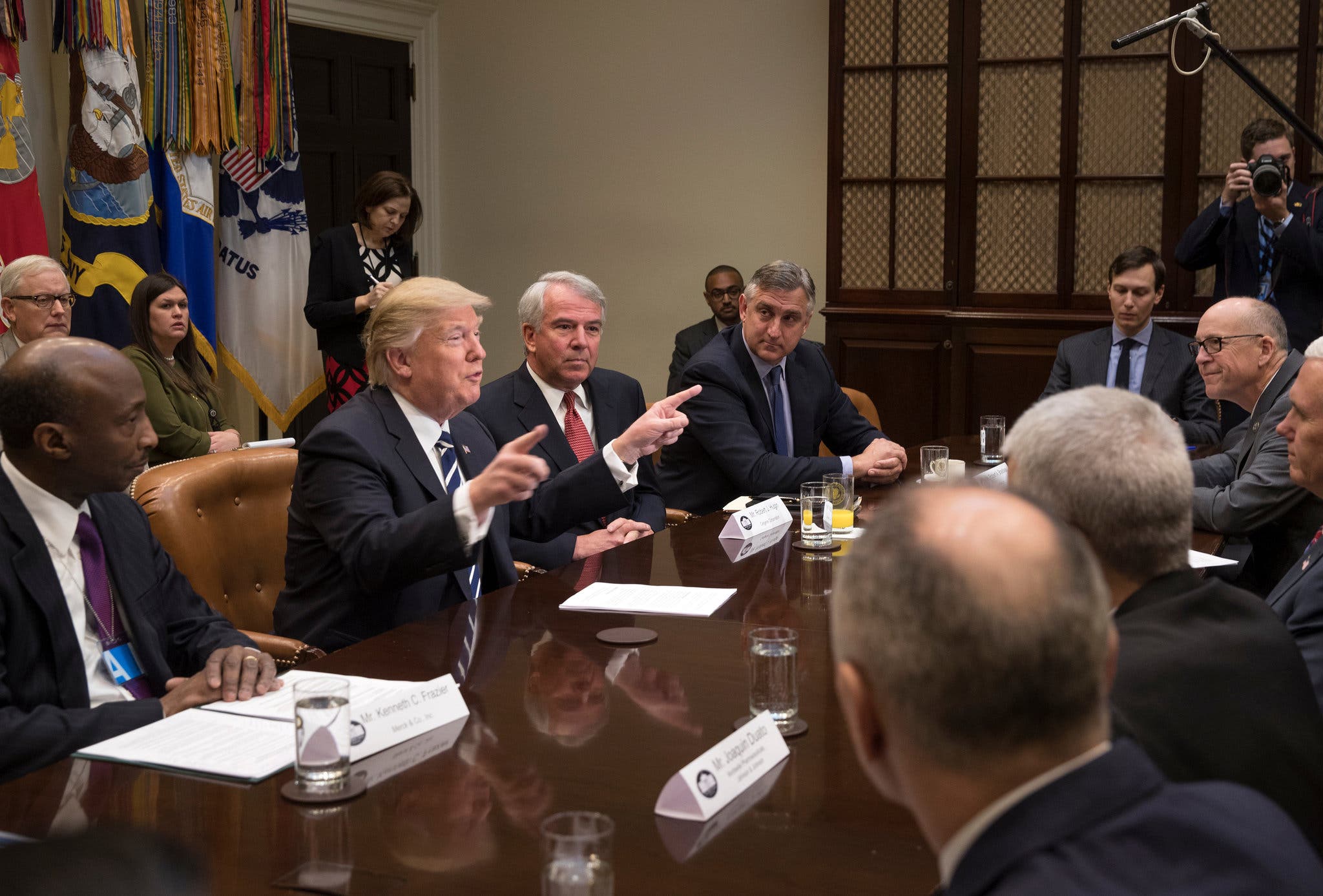Analyzing The Effectiveness Of Trump's Executive Order On Drug Prices

Table of Contents
The Executive Order's Key Provisions
Trump's executive order sought to tackle high drug prices through several key mechanisms. Its primary goals were to increase transparency in drug pricing, promote competition, and negotiate lower prices for Medicare Part B drugs. The order implemented several specific provisions:
-
International Price Negotiations for Medicare Part B Drugs: This provision aimed to allow the government to negotiate drug prices for Medicare Part B, referencing lower prices in other developed countries. This was a significant departure from previous policy.
-
Transparency Requirements for Drug Pricing: The order mandated increased transparency regarding drug pricing and pharmaceutical company profits, forcing companies to publicly disclose their pricing strategies and justify cost increases.
-
Measures to Address "Pay-for-Delay" Tactics: The executive order sought to curb the practice of "pay-for-delay," where pharmaceutical companies pay generic manufacturers to delay the launch of cheaper generic alternatives.
-
Incentives for Biosimilar Drug Development: The order encouraged the development and approval of biosimilars—less expensive versions of biologics—to increase competition and drive down prices.
Each provision aimed to leverage different market forces to reduce prescription drug costs. The success of these measures, however, remains a subject of ongoing debate.
Impact on Drug Prices: A Quantitative Analysis
Measuring the direct impact of Trump's executive order on drug prices is challenging due to the complexity of the pharmaceutical market and the interplay of various factors affecting drug costs. While comprehensive, readily available data specifically attributing price changes solely to the executive order is limited, some analyses suggest mixed results.
-
Average Price Changes for Specific Drugs: Studies analyzing specific drug price movements after the executive order's implementation have yielded inconsistent results, with some drugs showing price decreases and others experiencing increases.
-
Changes in Overall Prescription Drug Spending: Data on overall prescription drug spending trends show continued increases, although the rate of increase may have slowed in some areas. Attributing this solely to the executive order is difficult without controlling for other variables.
-
Comparison of Price Changes in the US versus Other Countries: While the executive order aimed to leverage international price comparisons, the US continues to have significantly higher drug prices than many other developed nations. This highlights the ongoing challenge of effectively controlling drug costs.
The absence of a clear, comprehensive dataset makes a definitive quantitative assessment difficult. Further research is needed to disentangle the effect of the executive order from other influencing factors, such as inflation and changes in demand.
The Pharmaceutical Industry's Response
The pharmaceutical industry responded to Trump's executive order with a mix of legal challenges, lobbying efforts, and adjustments to their business practices.
-
Lawsuits Filed Against the Government: Several pharmaceutical companies filed lawsuits challenging the legality and constitutionality of certain provisions of the executive order, particularly those related to international price negotiations.
-
Changes in Drug Development Strategies: Some industry analysts suggest that the executive order might have led to shifts in drug development strategies, with a potential focus on drugs less likely to be subject to price negotiations.
-
Public Statements and Lobbying Efforts: The industry launched significant lobbying campaigns against the executive order, arguing that it would stifle innovation and reduce the availability of new drugs.
The industry's strong resistance highlights the significant political and economic power wielded by the pharmaceutical industry and the challenges associated with implementing meaningful drug price controls.
Political and Social Impact
Trump's executive order had a significant political and social impact, fueling debates about healthcare costs and the role of government intervention in the pharmaceutical industry.
-
Public Opinion Polls Regarding the Executive Order: Public opinion polls showed mixed reactions to the executive order, with some supporting efforts to lower drug prices and others concerned about potential negative consequences for innovation.
-
Changes in Healthcare Legislation Related to Drug Pricing: The executive order did not lead to sweeping legislative changes concerning drug pricing, but it contributed to the ongoing political dialogue surrounding this important issue.
-
Impact on the Upcoming Elections: The executive order's impact on drug prices, and therefore healthcare affordability, became a major political talking point during subsequent elections.
The lasting legacy of the executive order is a continued emphasis on the need for drug price reform, but its effectiveness in actually lowering drug prices remains contested.
Conclusion
Analyzing the effectiveness of Trump's Executive Order on Drug Prices reveals a complex picture. While the order aimed to address high prescription drug costs through increased transparency, international price negotiations, and curbing anti-competitive practices, its concrete impact on drug prices remains uncertain. The lack of comprehensive data makes definitive conclusions challenging. Furthermore, the strong resistance from the pharmaceutical industry and the complexity of the healthcare market underscore the difficulty of implementing significant drug price reforms.
Key Takeaways:
- The executive order introduced several mechanisms aimed at lowering drug prices, but its effectiveness is debatable due to the limited available data.
- The pharmaceutical industry's response, including legal challenges and lobbying efforts, significantly influenced the order's implementation and outcomes.
- The order sparked considerable political and social debate, highlighting the importance of affordable prescription drugs and the ongoing struggle to control healthcare costs.
Call to Action: The debate surrounding drug pricing and the effectiveness of government interventions like Trump's Executive Order on Drug Prices remains crucial. We encourage further research and engagement on this topic. Explore independent analyses of drug price data, examine the long-term effects of the executive order's provisions, and participate in discussions about potential solutions to ensure access to affordable prescription drugs for all Americans. The fight for affordable healthcare, including accessible and affordable prescription drugs, requires continued vigilance and advocacy.

Featured Posts
-
 Aryna Sabalenkas Controversial Stuttgart Open Victory A Photos Role
May 13, 2025
Aryna Sabalenkas Controversial Stuttgart Open Victory A Photos Role
May 13, 2025 -
 The Cradle Of Life A Deeper Dive Into Lara Croft Tomb Raider
May 13, 2025
The Cradle Of Life A Deeper Dive Into Lara Croft Tomb Raider
May 13, 2025 -
 Nba Draft Lottery Raptors Top Seven Odds And Playoff Implications
May 13, 2025
Nba Draft Lottery Raptors Top Seven Odds And Playoff Implications
May 13, 2025 -
 Beyonces Hollywood Deal The Story Behind The Five Script Revisions
May 13, 2025
Beyonces Hollywood Deal The Story Behind The Five Script Revisions
May 13, 2025 -
 Reviewing The Action And Adventure In Lara Croft The Cradle Of Life
May 13, 2025
Reviewing The Action And Adventure In Lara Croft The Cradle Of Life
May 13, 2025
